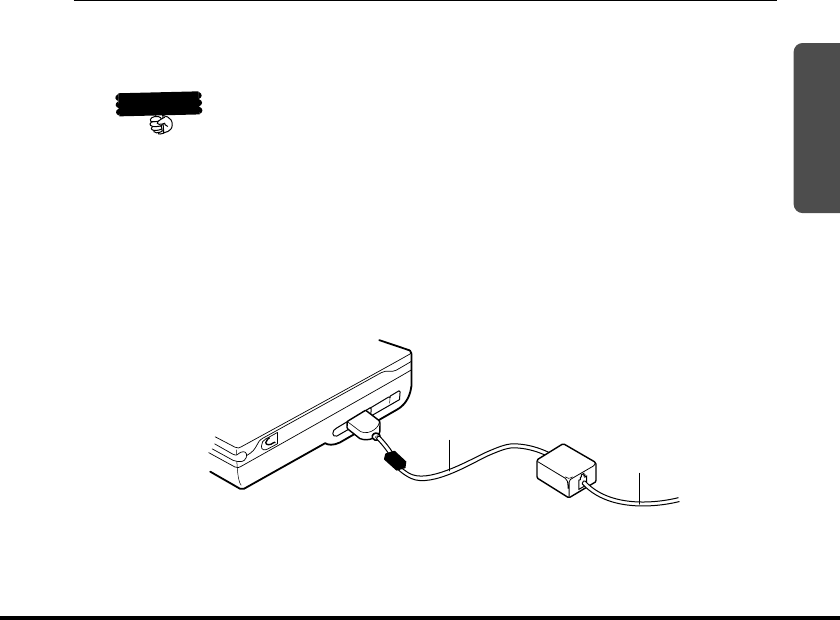
95
3
Note the following important points before connecting a peripheral.
• Some peripherals require changes in FIVA settings.
Some peripherals require certain settings to be made before they
can be used.
• Use only special cables for connections.
Use only the specified cables to connect peripherals. Even if the
shape of a connector on a cable appears the same as that for the
specified cable, it may not work properly. Carefully check to make
sure you are using the correct cables.
• Carefully read the documentation that comes with the
peripheral.
The peripheral connections described in this user’s guide are
general examples. Actual connection methods and settings
depend on the peripheral. When connecting a peripheral, use the
procedures provided in this user’s guide in combination with the
documentation that comes with the peripheral.
Connecting a Peripheral to FIVA
A “peripheral” is a device, like a printer or external floppy disk drive
that you connect to FIVA. The following procedure describes how to
connect a peripheral to FIVA and how to install a PC card.
Important
For information about peripherals that are not explained in this user’s
guide, see a documentation that comes with the peripheral.
Connecting to the Communication Port
Remove the connector cover from the right side of FIVA, and plug in
the connector of the cable as far as it will go.
If your FIVA has a built-in fax modem, it can perform high-speed data
communication, and send and receive faxes. Connect the supplied
modular cable to the communication port to perform these functions.
Modular cable
Telephone line


















